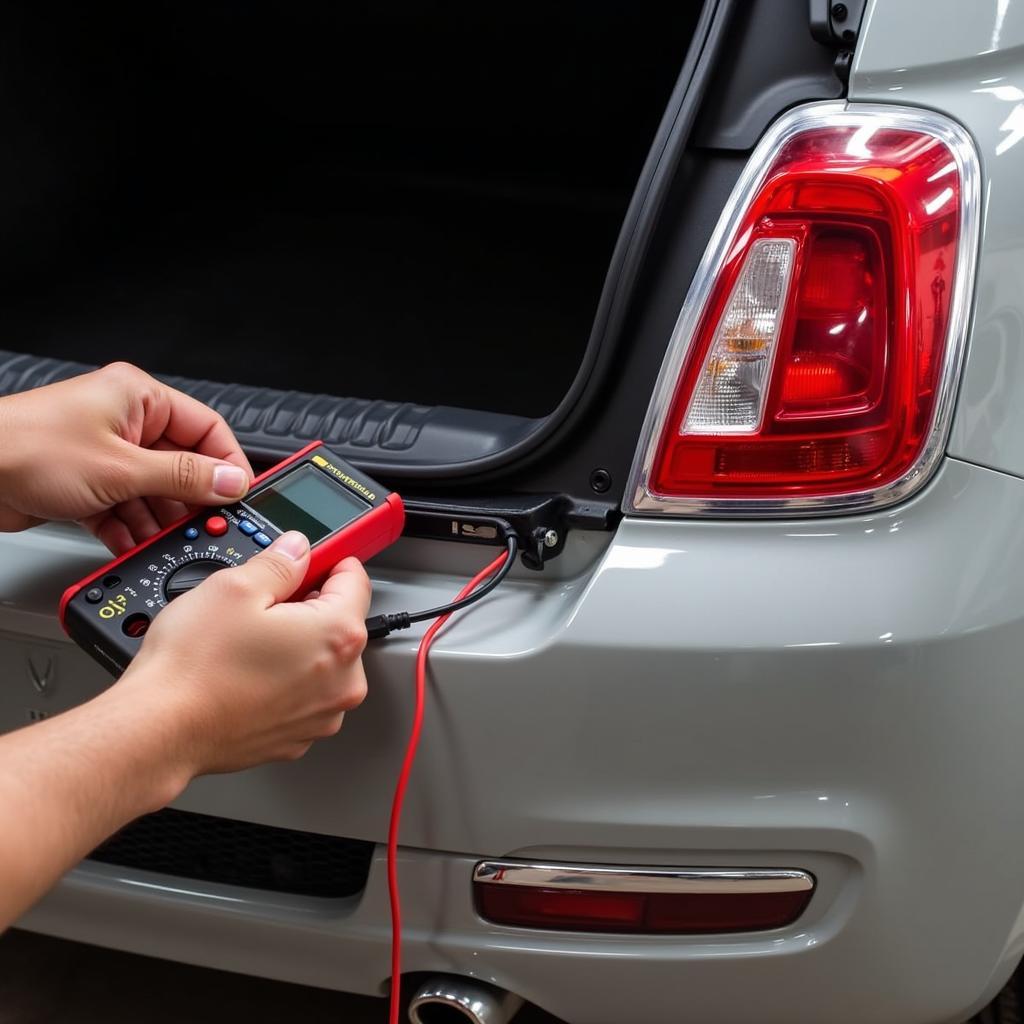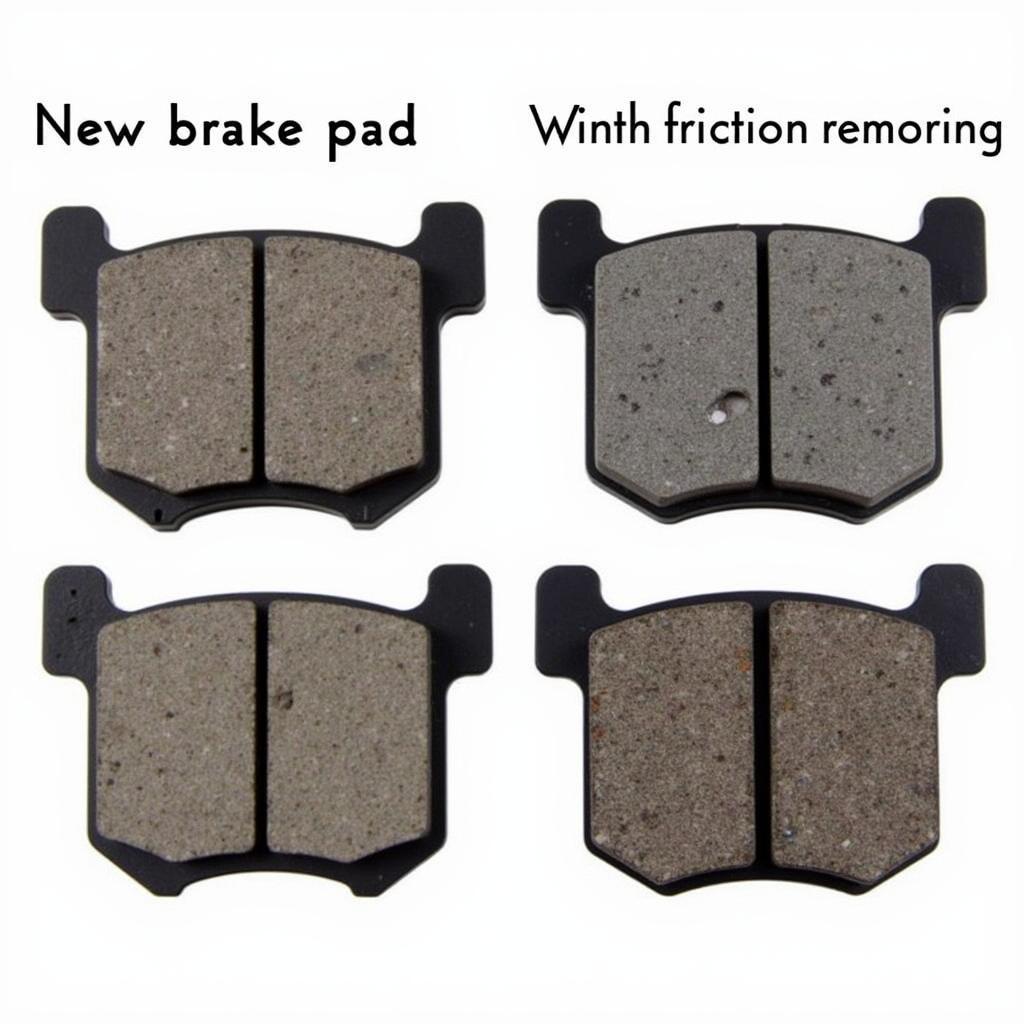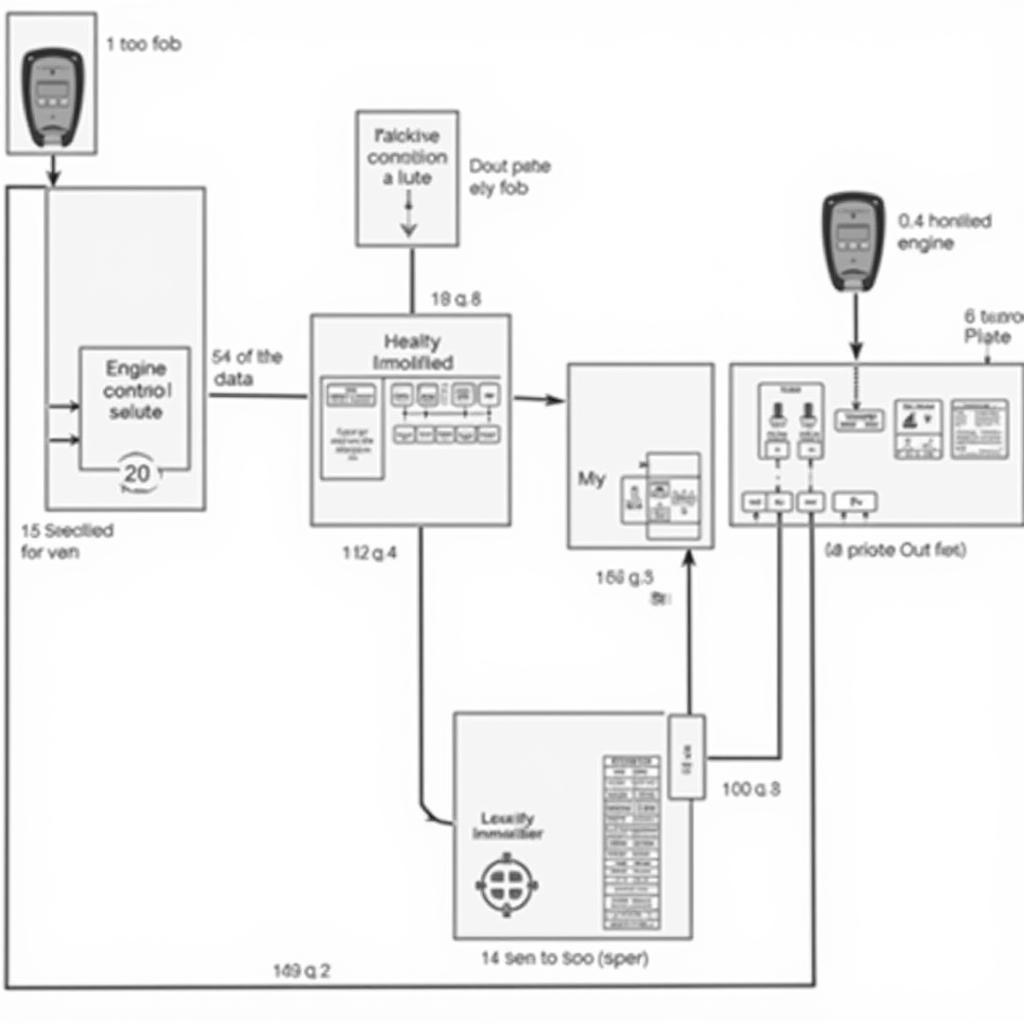The Fiat 500 Abarth is a fun, stylish, and sporty car that’s sure to turn heads. However, like any vehicle, it can experience its share of electrical gremlins. One common issue reported on forums is a brake light warning appearing on the dashboard, even when the brake lights seem to be working fine. If you’re experiencing this problem with your 2013 Fiat 500 Abarth, this comprehensive guide will walk you through the potential causes and provide solutions to get you back on the road with confidence.
Many factors can trigger this frustrating warning light, ranging from simple bulb failures to more complex issues with the car’s Body Computer Module (BCM). Let’s dive into the most common culprits and how to diagnose them.
Common Causes of a Brake Light Warning on a 2013 Fiat 500 Abarth
Before we delve into the solutions, it’s important to understand what can cause the brake light warning to illuminate. Here are some of the most frequent issues:
- Burnt Out Bulbs: This is the most straightforward explanation. Even if one brake light bulb is blown, it can trigger the warning on your dashboard.
- Faulty Brake Light Switch: The brake light switch, located behind the brake pedal, is responsible for signaling the brake lights to illuminate when you press the pedal. A malfunctioning switch can disrupt this signal, leading to a false warning.
- Wiring Problems: Worn-out, corroded, or damaged wiring within the brake light circuit can cause a break in the electrical connection, resulting in the brake lights not functioning correctly and the warning light illuminating.
- Bad Ground Connection: A poor ground connection can interrupt the flow of electricity, leading to a variety of electrical problems, including malfunctioning brake lights.
- Body Control Module (BCM) Issues: In some cases, the issue may stem from a software glitch or a fault within the BCM, which is responsible for controlling various electrical functions in your car, including the lighting system.
Troubleshooting the Brake Light Warning
Now that you have a better understanding of the potential causes let’s explore how to troubleshoot the issue effectively:
- Check the Bulbs: Begin with the simplest solution first. Inspect all your brake light bulbs for any signs of burning out. If you find a blown bulb, replace it with a new one of the same type and wattage.
- Inspect the Brake Light Switch: Locate the brake light switch, typically found above the brake pedal arm. Check for any visible signs of damage or loose connections. You can test the switch by pressing and releasing the brake pedal while observing if the brake lights activate correctly. If the switch appears faulty, it will need to be replaced.
- Examine the Wiring: Carefully inspect the wiring harness that connects to the brake lights. Look for any signs of fraying, cuts, burns, or corrosion. If you find any damaged sections, repair them by splicing in new wiring and securing the connections with electrical tape or heat shrink tubing.
- Verify Ground Connections: Locate the ground wire for the brake light circuit. It’s typically a black wire connected to the vehicle’s chassis. Ensure this connection is clean and tight. Use a wire brush to remove any rust or corrosion, and reconnect the ground wire securely.
- Consult a Professional for BCM Diagnosis: If you’ve ruled out the previous possibilities and the warning light persists, the issue may lie within the Body Control Module (BCM). It’s best to consult a qualified mechanic or an automotive electrician who can diagnose and address any BCM-related problems. They have the necessary diagnostic tools and expertise to pinpoint the issue.
Advanced Troubleshooting and Solutions
If the problem persists after checking the common culprits, it’s time to consider more advanced troubleshooting methods:
- Voltage Testing: Use a multimeter to check the voltage at the brake light socket. When the brake pedal is pressed, you should measure battery voltage (around 12 volts). If there’s no voltage or the voltage is significantly lower, it indicates a problem within the wiring or the brake light switch.
- Check for Error Codes: Connecting an OBD-II scanner to your car’s diagnostic port can reveal any stored error codes related to the brake light system. These codes can provide valuable clues to the underlying issue.
- Software Updates: Sometimes, outdated software in the BCM can cause unexpected issues. Contacting a Fiat dealership or a qualified mechanic to check for and install any available software updates for the BCM might resolve the problem.
 Mechanic inspecting brake light wiring harness of Fiat 500
Mechanic inspecting brake light wiring harness of Fiat 500
Preventing Future Brake Light Warnings
While some issues require professional attention, you can take proactive steps to minimize the likelihood of encountering brake light problems in the future:
- Regular Bulb Inspections: Make it a habit to check your brake lights and turn signals regularly for any signs of dimming or burning out. Replace bulbs promptly to ensure optimal visibility and prevent warning lights.
- Careful Wiring Handling: When working on your car’s electrical system, handle wiring harnesses with care to avoid causing damage. Secure any loose wiring properly to prevent shorts or breaks.
- Corrosion Prevention: Regularly inspect and clean electrical connections, particularly ground connections, to prevent corrosion buildup, which can lead to electrical faults.
Conclusion
A brake light warning on your 2013 Fiat 500 Abarth, while inconvenient, is usually a sign of a solvable problem. By following the troubleshooting steps outlined in this guide, you can identify the root cause and address it effectively. Remember, a properly functioning lighting system is crucial for your safety and the safety of others on the road.
If you’re uncertain about any aspect of the diagnosis or repair process, it’s always best to consult a qualified mechanic or an automotive electrician to ensure the job is done correctly and safely.


